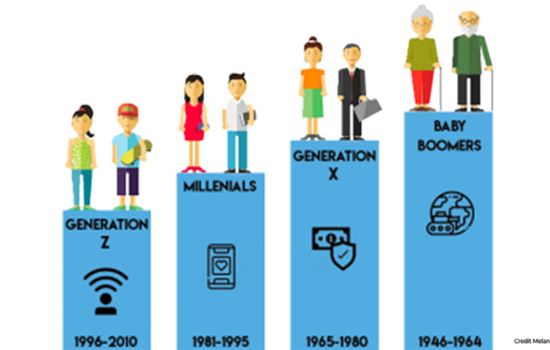Gen Y is just one more facet of diversity in today’s dynamic workplace that goes beyond gender, race, and ethnicity. As members of Generation Z join Baby Boomers, Millennials, and Generation X in the workplace, HR managers must find ways to foster an inclusive atmosphere that inspires and involves people of all ages.
Table of Contents
Strategies:
Human resource managers can’t hope to solve this problem by ignoring the fact that different generations have different priorities, values, and work habits. To inspire employees of all ages, here are more than twenty tactics that human resource managers might use:
Understanding Generational Characteristics:
Human resource managers would do well to educate themselves on the traits that distinguish different generations. This includes learning about how people of different ages prefer to communicate, their goals for the future, and their outlook on the workplace.
Adaptable Work Schedule:
Workers of all ages are looking for ways to improve their work-life balance, and employers can cater to their needs by providing options like remote work, flexible hours, or reduced work weeks.

Recognition and Rewards Programme:
Recognizing and rewarding employees for their individual and team accomplishments is a great way to engage employees of all ages.
mentoring Programmes:
The best way to encourage learning and collaboration between generations is to set up mentoring programs in which more seasoned workers may guide their younger colleagues.
Opportunities for Professional Development:
Offering chances to learn new skills, advance in one’s career, and gain experience is a great way to attract Millennials and Gen Z and to demonstrate to older generations that you care about their professional growth.
Workplace Wellness Initiative:
Employees of all ages can benefit from activities that improve physical and mental health, such as exercise challenges, meditation sessions, or ergonomic assessments.
Generationally Tailored Benefits:
Showing empathy for employees’ unique situations is possible through offering benefits packages that meet their specific needs, whether that’s helping them pay off student loans or saving for retirement.

Sensitivity Training:
Holding seminars or training sessions on generational differences assists staff in comprehending and valuing varied viewpoints, which in turn decreases disagreements and enhances teamwork.
Open Communication Channel:
Employees of all ages can express their ideas and concerns through the creation of open communication channels, which include feedback sessions, town hall meetings, and digital suggestion boxes.
Team Projects Bringing Generations Together:
Fostering cooperation, creativity, and empathy by facilitating teamwork on projects that bring together employees from diverse generations.
Technology Training Programmes:
Encouraging training programs for older employees to assist them adjust to new technologies and digital tools promotes inclusion and guarantees that everyone can contribute effectively to the digital workplace.
Job Rotation Opportunities:
By providing job rotation opportunities, employers may help employees of all ages stay engaged and interested in their work by exposing them to different departments and positions.
Flexible Career routes:
To accommodate varied career trajectories and objectives, offering flexible career routes allows employees to explore different positions and responsibilities inside the organization.
Leadership Development Programmes:
Putting money into programs that help people of all ages become better leaders can help with succession planning and get personnel ready for the future.

Social contacts:
Encouraging social contacts and team-building events outside of work can help employees create meaningful relationships across generations, fostering a sense of camaraderie and belonging. Also, it can help them meet new friends from different generations.
Promoting Intergenerational Learning:
One way to help employees grow professionally is to pay for their attendance at conferences, workshops, or seminars so they can go together.
Formulating Intergenerational Employee Resource Groups:
Putting in place employee resource groups that are multi-generational allows workers from different generations to get together and share what they’ve learned.
Celebrating Generational Diversity:
Intergenerational networking events, heritage months, and other programs that highlight the unique contributions of different generations help foster understanding and acceptance of one another.
Encouraging Work-Life Integration:
A culture that supports and understands its people is fostered when work and personal lives are seen as interdependent, rather than as separate entities.
Open and Honest Decision-Making:
Employees of all ages are more likely to trust and have faith in management when they see how important decisions, like promotions or project assignments, are made.
Workforce flexibility:
Embracing a culture of workforce flexibility that allows employees to choose their own schedules, locations, and methods of work encourages responsibility and independence among workers of all ages.
Reverse Mentoring Programme:
Another way to encourage learning and respect between employees is to set up programs where younger workers guide older ones in areas such as technology and social media.
Conclusion:
Ultimately, HR managers must embrace a comprehensive strategy that acknowledges and appreciates the distinct qualities of every generation if they are to triumphantly oversee a workforce that spans multiple generations.
Organizations may achieve long-term success in today’s varied workforce by adopting these practices and creating a work environment that encourages employees of all ages to work together, think creatively, and be actively involved in their work.

